Abstract
Photosystem I electron transport activity has been found to be considerably higher in a decaploid tall fescue (Festuca arundinacea Schreb.) genotype as compared to a common hexaploid genotype. The decaploid genotype also displayed a higher photosystem whole chain (Photosystem II plus Photosystem I uncoupled) activity, suggesting a connection between polyploidy and increased electron transport activity. However, when a polyploidy series of tall fescue, ranging from diploid to decaploid with several different genetic isolates at each ploidy level, was examined in natural growth conditions, no effect of increasing genome content on electron transport and photophosphorylation was found. These results suggest that a gene component of one of the genomes involved may be responsible for the increased activity rather than simply the total chromosome content.
Full text
PDF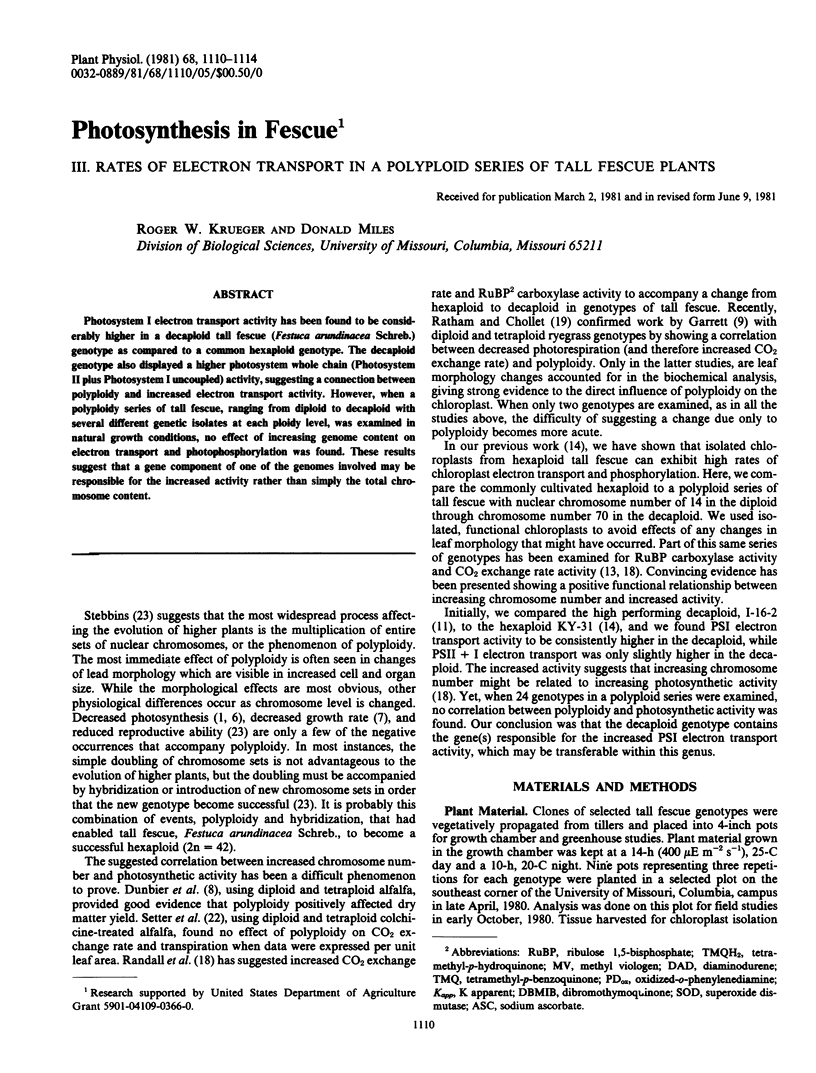
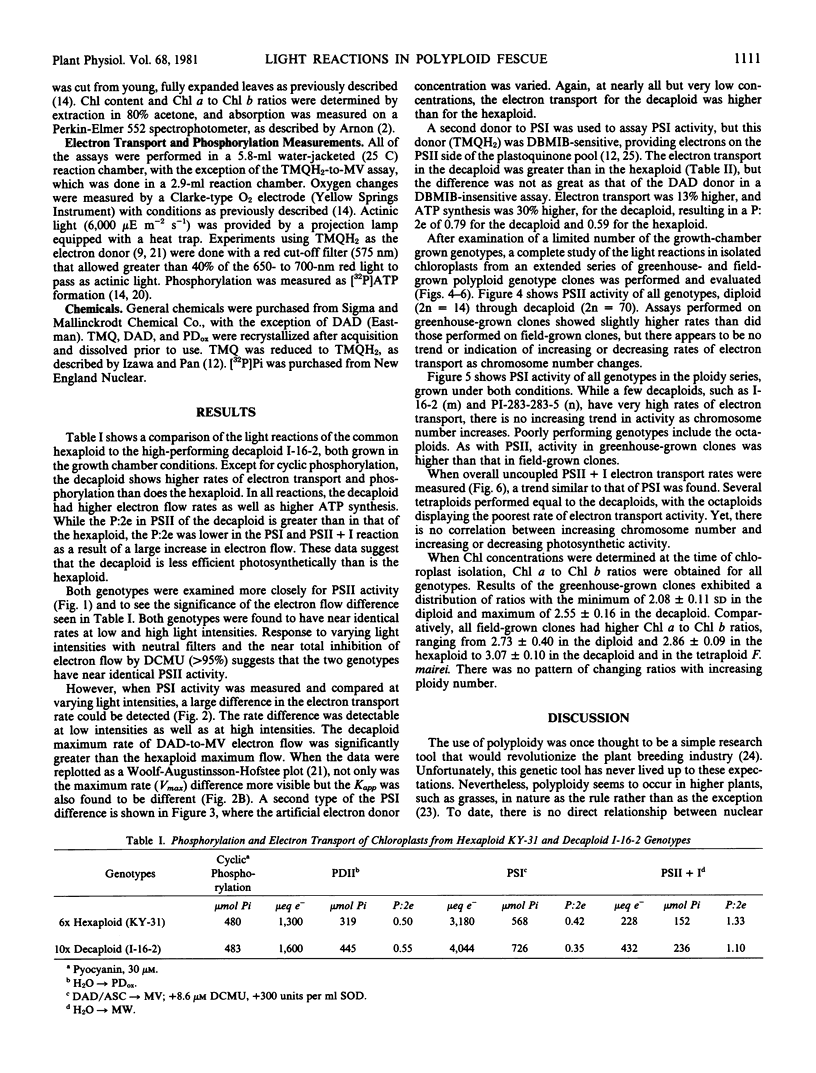
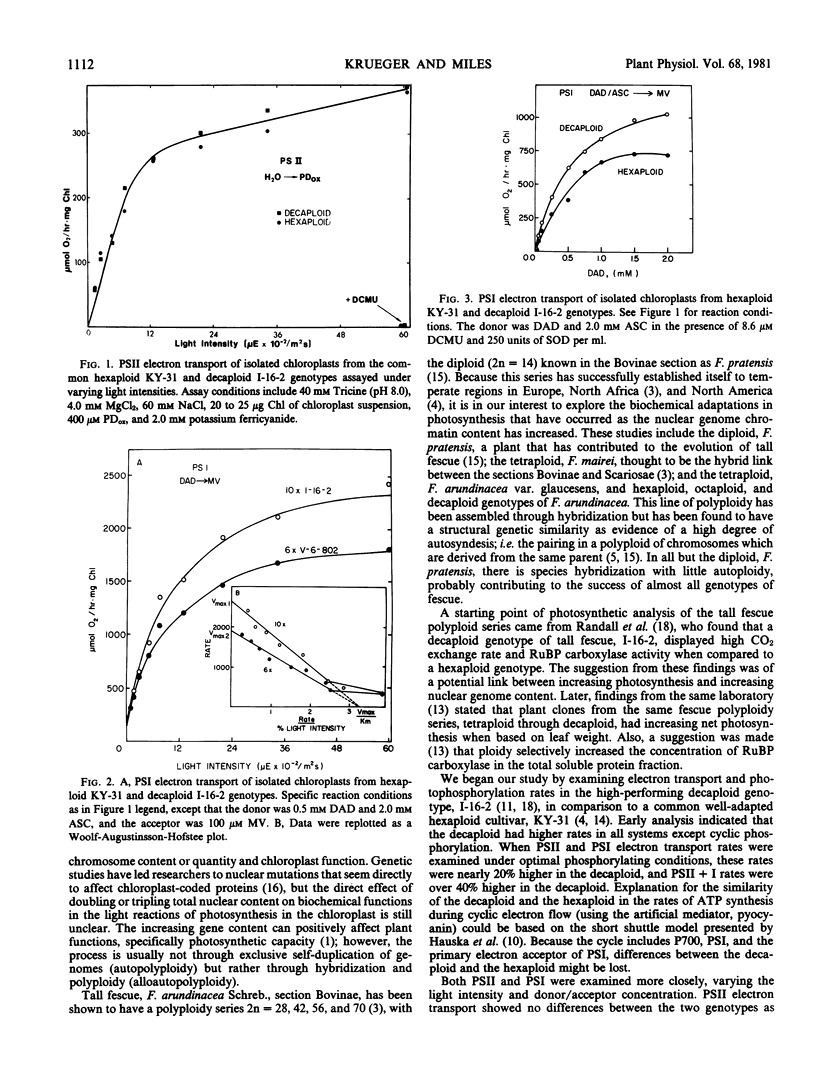
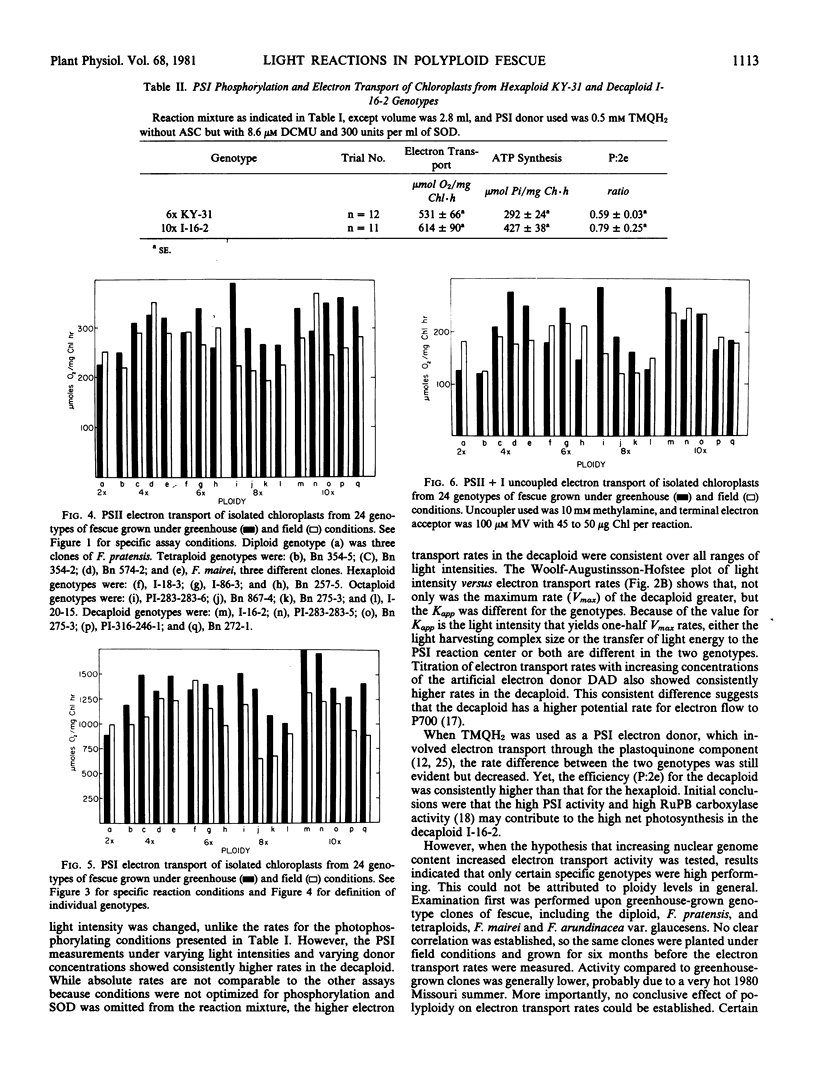
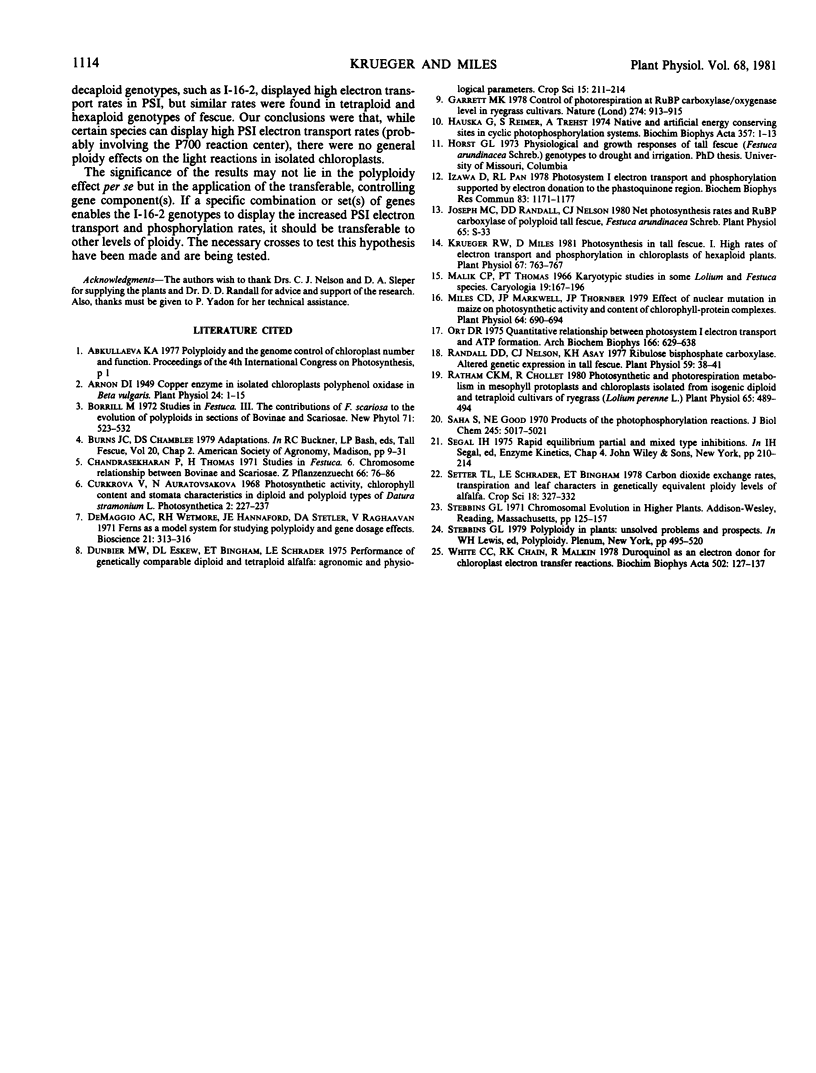
Selected References
These references are in PubMed. This may not be the complete list of references from this article.
- Arnon D. I. COPPER ENZYMES IN ISOLATED CHLOROPLASTS. POLYPHENOLOXIDASE IN BETA VULGARIS. Plant Physiol. 1949 Jan;24(1):1–15. doi: 10.1104/pp.24.1.1. [DOI] [PMC free article] [PubMed] [Google Scholar]
- Hauska G., Reimer S., Trebst A. Native and artificial energy-conserving sites in cyclic photophosphorylation systems. Biochim Biophys Acta. 1974 Jul 25;357(1):1–13. doi: 10.1016/0005-2728(74)90106-6. [DOI] [PubMed] [Google Scholar]
- Izawa S., Pan R. L. Photosystem I electron transport and phosphorylation supported by electron donation to the plastoquinone region. Biochem Biophys Res Commun. 1978 Aug 14;83(3):1171–1177. doi: 10.1016/0006-291x(78)91518-8. [DOI] [PubMed] [Google Scholar]
- Krueger R. W., Miles D. Photosynthesis in Fescue: I. HIGH RATE OF ELECTRON TRANSPORT AND PHOSPHORYLATION IN CHLOROPLASTS OF HEXAPLOID PLANTS. Plant Physiol. 1981 Apr;67(4):763–767. doi: 10.1104/pp.67.4.763. [DOI] [PMC free article] [PubMed] [Google Scholar]
- Miles C. D., Markwell J. P., Thornber J. P. Effect of nuclear mutation in maize on photosynthetic activity and content of chlorophyll-protein complexes. Plant Physiol. 1979 Nov;64(5):690–694. doi: 10.1104/pp.64.5.690. [DOI] [PMC free article] [PubMed] [Google Scholar]
- Ort D. R. Quantitative relationship between photosystem I electron transport and ATP foramtion. Arch Biochem Biophys. 1975 Feb;166(2):629–638. doi: 10.1016/0003-9861(75)90429-4. [DOI] [PubMed] [Google Scholar]
- Randall D. D., Nelson C. J., Asay K. H. Ribulose bisphosphate carboxylase: altered genetic expression in tall fescue. Plant Physiol. 1977 Jan;59(1):38–41. doi: 10.1104/pp.59.1.38. [DOI] [PMC free article] [PubMed] [Google Scholar]
- Rathnam C. K., Chollet R. Photosynthetic and Photorespiratory Carbon Metabolism in Mesophyll Protoplasts and Chloroplasts Isolated from Isogenic Diploid and Tetraploid Cultivars of Ryegrass (Lolium perenne L.). Plant Physiol. 1980 Mar;65(3):489–494. doi: 10.1104/pp.65.3.489. [DOI] [PMC free article] [PubMed] [Google Scholar]
- Saha S., Good N. E. Products of the photophosphorylation reaction. J Biol Chem. 1970 Oct 10;245(19):5017–5021. [PubMed] [Google Scholar]
- Stebbins G. L. Polyploidy in plants: unsolved problems and prospects. Basic Life Sci. 1979;13:495–520. doi: 10.1007/978-1-4613-3069-1_26. [DOI] [PubMed] [Google Scholar]
- White C. C., Chain R. K., Malkin R. Duroquinol as an electron donor for chloroplast electron transfer reactions. Biochim Biophys Acta. 1978 Apr 11;502(1):127–137. doi: 10.1016/0005-2728(78)90137-8. [DOI] [PubMed] [Google Scholar]


